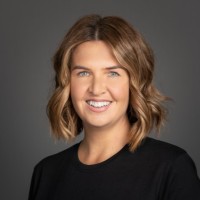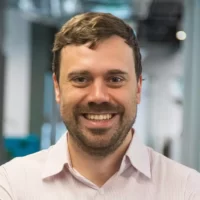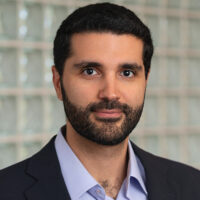-

Robert Mahony
General Chair
Australian National University
Robert Mahony is a Professor in the Research School of Engineering at the Australian National University. He received his BSc in 1989 (applied mathematics and geology) and his PhD in 1995 (systems engineering) both from the Australian National University. He is a fellow of the IEEE and was president of the Australian Robotics Association from 2008-2011. His research interests are in non-linear systems theory with applications in robotics and computer vision. He is known for his work in aerial robotics, geometric observer design, matrix subspace optimisation and image based visual servo control.
-

Donald G Dansereau
Program Chair
University of Sydney
Dr Donald Dansereau is a senior lecturer in the School of Aerospace, Mechanical and Mechatronic Engineering, and the Perception Theme Lead for the Sydney Institute for Robotics and Intelligent Systems. His work explores how new imaging devices can help robots see and do, encompassing the design, fabrication, and deployment of new imaging technologies. In 2004 he completed an MSc at the University Calgary, receiving the Governor General’s Gold Medal for his pioneering work in light field processing. In 2014 he completed a PhD on underwater robotic vision at the Australian Centre for Field Robotics, followed by postdoctoral appointments at QUT and Stanford University. Donald’s industry experience includes physics engines for video games, computer vision for microchip packaging, and chip design for automated electronics testing.
-

Katrina Tune
Conference Manager
Queensland University of Technology
Katrina was the Chief Operating Officer for the ARC Centre of Excellence for Robotic Vision (ACRV) between 2019 – 2021. In this role she assisted with the coordination of the 2020 and 2021 Robotic Vision Summer Schools and witnessed firsthand the outstanding opportunity offered to students of this program, to develop skills and knowledge in the fields of robotic vision.
Katrina also coordinated the establishment of Robotic Vision Australia, a legacy activity of ACRV designed to advance education in the fields of robotics, computer vision and artificial intelligence through a number of priority areas; including developing human capital through the Robotic Vision Summer School. Katrina is the current secretary of Robotic Vision Australia.
-

Tobias Fischer
Workshop chair
Queensland University of Technology
Dr Tobias Fischer (www.tobiasfischer.info) conducts interdisciplinary research at the intersection of intelligent robotics, computer vision, and computational cognition. His main goal is to develop high-performing, bio-inspired computer vision algorithms that simultaneously examine animals/humans and robots’ perceptional capabilities. Since January 2022 Tobias has been a Lecturer in the QUT Centre for Robotics. He joined QUT as an Associate Investigator and Research Fellow working with Professor Michael Milford in January 2020. Previously, Dr Fischer was a postdoctoral researcher in the Personal Robotics Lab at Imperial College London. He received a PhD from Imperial College in January 2019. Tobias’ thesis was awarded the UK Best Thesis in Robotics Award 2018 and the Eryl Cadwaladr Davies Award for the best thesis in Imperial’s EEE Department in 2017-2018. He previously received an M.Sc. degree (distinction) in Artificial Intelligence from The University of Edinburgh in 2014 and a B.Sc. degree in Computer Engineering from Ilmenau University of Technology, Germany, in 2013. His works have attracted two best poster awards, one best paper award, and he is the senior author of the winning submission to the Facebook Mapillary Place Recognition Challenge 2020.
-

Tim Patten
Local chair
University of Technology Sydney
Tim Patten is a postdoctoral research fellow at the Robotics Institute at the University of Technology Sydney. His research focuses on perception and machine/deep learning methods applied to scene and task understanding for robotic and autonomous systems. Previously, Tim was employed as a postdoctoral researcher at the Vision for Robotics laboratory at the Technical University of Vienna. He developed methods for object segmentation, recognition, grasping and task planning for multiple EU funded projects. Tim received his PhD from the Australian Centre for Field Robotics at the University of Sydney in 2017. During his PhD he worked on a number of field robotics projects and developed methods for active object classification, object recognition from LIDAR and state estimation for environmental modelling.
-

Yizhak Ben-Shabat (Itzik)
Posters and Website chair
Technion and Australian National University
Itzik is a Research Fellow at the Technion, Israel Institute of Technology and visiting the Australian National University (ANU) as part of his Marie Sklodowska Curie Global Individual Fellowship. Prior to that, he was a research fellow at the Australian Centre for Robotic Vision (ACRV). Previously, he was a Ph.D. student at Technion Israel Institute of Technology where he worked on “Classification, segmentation, and geometric analysis of 3D point clouds using deep learning” under the supervision of Prof. Anath Fischer and Michael Lindenbaum. Itzik completed his Bsc. Cum Laude in 2008 and his Msc. Summa Cum Laude in 2015 (Mechanical Engineering, Technion). His research interests lie at the intersection of robotic perception, 3D computer vision, and geometric analysis, usually using 3D point cloud data.
During his time at ACRV, he played a key role in the creation of IKEA assembly dataset, and presented DeepFit, a novel surface fitting method, at ECCV 2020 as an oral presentation. “My mission is to make beautifully practical and accessible 3D data algorithms to change the world”. In his quest to make research accessible he created The Talking Papers Podcast and also built an online Facebook community for computer vision, machine and deep learning researchers, in academia and industry across Australia.
You can view his research blog, where he shares his latest research in a language that non-experts can also understand.





